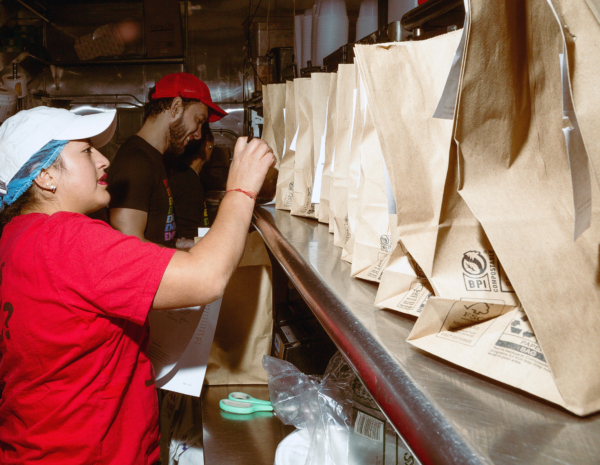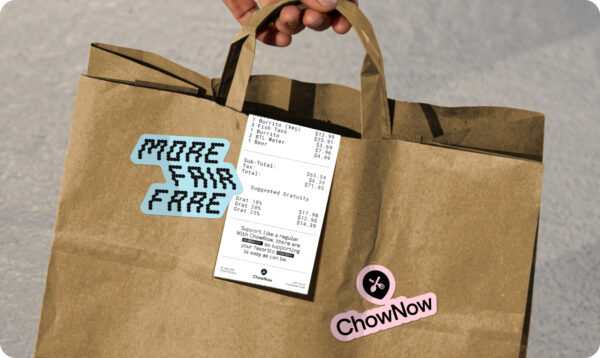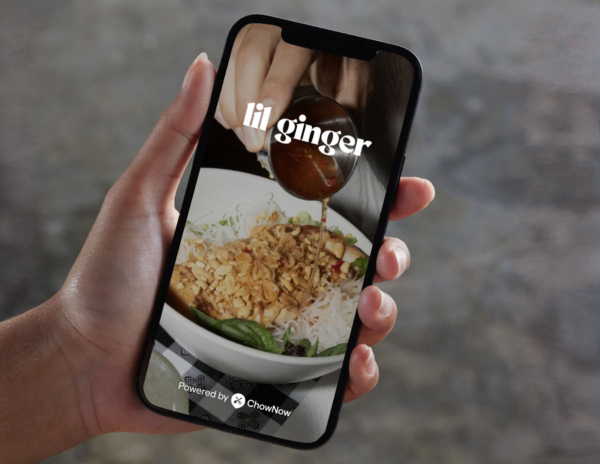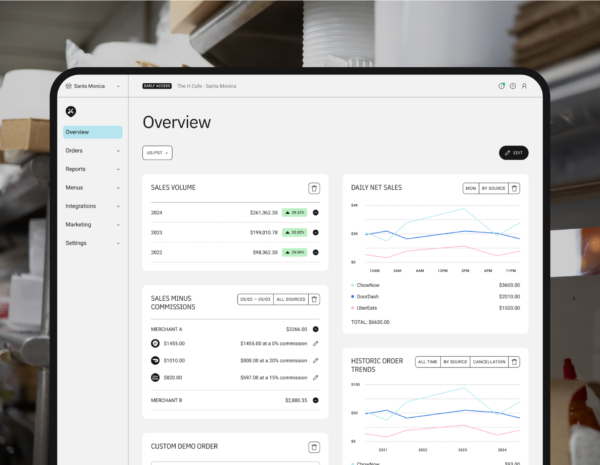The Best Restaurant Technology Of 2025

Most of the restaurant technology tools operators use every day were first introduced years ago, but it wasn’t until the 2020 Tech Boom, brought on by COVID-19, that widespread adoption became essential.
What was once a gradual process turned into a rapid transformation, permanently reshaping how restaurants operate and interact with customers.
Customers have now fully embraced the benefits of using restaurant technology, and to keep up with guest’s evolving expectations, the tech industry is growing at an incredible rate.
Knowing which tools your business needs can feel daunting, so we’ve organized the best restaurant technology tools of 2025 into eight key categories that cover every aspect of running a restaurant. We then recommend the best companies in each sector so you find the right solutions for your business.
But first, let’s look at how to choose the right technology for your restaurant.
3 Steps to Choosing the Right Restaurant Technology Tools
There are a lot of restaurant tech solutions available to you, and choosing the right one can feel overwhelming, but it doesn’t have to if you follow these three simple steps.
1. Identify your biggest pain points.
Start by pinpointing where your restaurant struggles the most. Are labor costs too high? Is online ordering inefficient? Do you lose money due to food waste? The best tech investments solve real problems.
For example:
- Struggling with staff shortages? Look into AI-driven scheduling and automation tools.
- Too many missed reservations? A smart reservation and waitlist system can help.
- Experiencing over-ordering or last-minute shortages? An inventory management system with automated restocking alerts keeps your stock levels in check.
2. Set clear goals.
Once you know your biggest challenges, define what success looks like. Are you aiming to speed up service, cut labor costs, or increase online sales? Your goals should guide your tech choices.
For example:
- If you want to improve efficiency—look for software that integrates with your POS and kitchen systems.
- If customer retention is a priority—consider a digital loyalty program or automated marketing tools.
- If expansion is in your future—choose scalable, cloud-based technology that grows with your business.
3. Consider your budget.
Technology is an investment, but not every tool needs to be expensive. Instead of focusing only on upfront costs, consider ROI (return on investment). A higher-priced system that saves time and reduces errors might be more valuable than a cheaper, less effective alternative.
Ask these questions before making a purchase:
- Will this technology save time or reduce costs?
- Can it increase sales or customer retention?
- Will it integrate smoothly with my existing systems?
The bottom line is you want to focus on tech that actually moves the needle and makes a difference in operations and profitability.
A Modern POS System Powers Transactions and Data-Driven Decisions
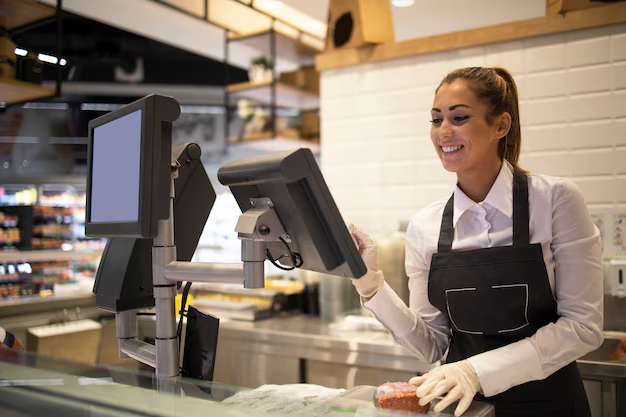
Every restaurant needs a POS—period.
It is the central nervous system of your restaurant’s operations, and most of the tools we cover in this article will need to integrate with your POS (point-of-sale) system.
With a modern cloud-based POS, restaurants can streamline order taking, reduce human error, and improve the overall speed of service.
Many systems now offer mobile ordering capabilities, allowing servers to take orders tableside or giving guests the ability to order and pay directly from their phones. This not only enhances efficiency but also improves the guest experience.
Key Benefits of a Modern POS System:
- Seamless Transactions: Accept payments quickly and securely, whether in-person, online, or through mobile devices.
- Order Management: Reduce human error and speed up service with tableside ordering, kitchen display system (KDS) integration, and self-service kiosks.
- Real-Time Data & Analytics: Track sales trends, top-selling menu items, and peak business hours to make informed decisions.
- Guest Experience & Loyalty: Integrate with CRM and loyalty programs to personalize offers and encourage repeat business.
- Multi-Channel Integration: Sync with online ordering platforms, third-party delivery apps, and marketing tools for a connected restaurant ecosystem.
You more than likely already have a POS system in your restaurant, but you should consider whether it’s doing everything for your business that it should be.
If your current POS system keeps appearing in step one (identifying your pain points) of the three steps to choosing restaurant tech, you should consider investing in a new one.
Online Ordering and Delivery Management Keep Revenue Flowing
Online ordering and delivery management systems unlocked new revenue streams for thousands of restaurants. In fact, 60% of restaurant operators say that offering delivery has had a progressive impact on sales.
Most restaurants have either first-party ordering (your own website or app) or third-party platforms (like DoorDash or Uber Eats).
A first-party ordering system (like your own website or app) gives you full control over customer relationships, branding, and, most importantly, your profits. Restaurants using first-party systems avoid the steep commission fees that third-party apps like DoorDash and Uber Eats charge—fees that can eat into margins by as much as 30% per order.
While third-party platforms offer visibility, they own the customer relationship, making it harder to build loyalty and bring diners back. Plus, their reliance on high fees forces restaurants to either raise menu prices or accept smaller profits.
That’s why many operators are shifting to first-party ordering solutions that provide direct customer communication, better margins, and a seamless ordering experience. ChowNow includes commission-free direct website ordering and your restaurant’s own branded mobile app, two direct channels that allow you to keep your profits.
Beyond where customers place orders, how you manage deliveries matters just as much. Restaurants handling delivery need tools that optimize driver routes, track orders in real-time, and integrate with the POS.
If you rely on third-party couriers, it’s crucial to have a system that syncs with delivery partners to prevent delays and mistakes.
Key Benefits of Online Ordering and Delivery Management
- Higher profit margins: First-party ordering platforms help restaurants keep more of their revenue by avoiding high third-party commission fees.
- Faster, more efficient operations: Integrated ordering and delivery systems reduce errors, speed up fulfillment, and keep service running smoothly.
- Improved customer experience: Real-time order tracking and seamless checkout options provide a more convenient experience for guests.
- More control over branding and customer relationships: First-party platforms allow restaurants to own the customer experience rather than handing it over to third-party apps.
- Better order accuracy and fewer delays: A well-integrated system ensures that online and in-person orders are handled efficiently, reducing mistakes and wait times.
Smart Staffing Solutions

Scheduling and managing labor is tough, like, really tough. It takes a tremendous amount of time and effort, and if done incorrectly, can cost restaurants significant sums of money.
The right staffing technology can help restaurants schedule smarter, forecast labor needs, and automate payroll—saving time and reducing costs while keeping operations running smoothly.
Beyond cost savings, automated scheduling can improve efficiency, allowing employees to swap shifts, request time off, and receive real-time updates all through a mobile app, significantly reducing scheduling conflicts, last-minute call-outs, and no-call no-shows. This frees up management to focus on more pressing needs.
Staffing automation, such as 7Shifts, can also take care of payroll, tracking overtime, managing tip distribution, and calculating wages accurately, ensuring employees are paid correctly and laws are followed.
Key Benefits of Smart Staffing Solutions:
- Reduced labor costs: AI-driven forecasting ensures optimal staffing levels, cutting unnecessary payroll expenses.
- Improved efficiency: Automated scheduling saves time and reduces no-shows.
- Better employee satisfaction: Mobile access to schedules makes it easy for staff to swap shifts and manage availability.
- Accurate payroll processing: Automated calculations prevent errors and ensure fair tip distribution.
- Labor law compliance: Overtime tracking and alerts help restaurants avoid costly violations.
With the right staffing technology, restaurant operators can spend less time managing schedules and more time focusing on delivering great service while keeping costs under control.
Marketing and Loyalty Tools for Customer Retention
The largest portion of a restaurant’s profits comes from repeat customers—the bigger your base of repeat customers, the more money you make.
The goal, then, is to grow that customer base.
The problem is that it takes tons of work.
Fortunately for you, there are incredibly efficient automated tools to make marketing and loyalty simple and easy—helping you increase repeat business, boost engagement, and build stronger relationships with your guests.
One of the most effective ways to do this is through automated email and SMS marketing. Instead of relying on generic promotions, modern marketing platforms use customer data to send personalized messages based on past orders and visit frequency. If you’re not an email expert, ChowNow’s automated email marketing has been tested to maximize your results.
When guests feel rewarded for their visits, they’re far more likely to return. A well-designed loyalty program doesn’t just increase repeat visits—it also encourages higher spending per visit by offering incentives for larger purchases or frequent orders. ChowNow’s customizable rewards program drives repeat orders on your direct channels; it’s designed to protect profits and keep loyal diners engaged.
Key Benefits of Marketing and Loyalty Tools:
- Higher customer retention: Personalized promotions and rewards encourage repeat visits.
- Increased revenue per customer: Loyalty programs and strategic offers drive larger orders.
- Stronger brand engagement – Automated marketing keeps customers connected to your restaurant.
- Effortless outreach: AI-driven messaging delivers promotions at the right time with minimal effort.
- Better online reputation: Review management tools help generate more positive feedback and attract new guests.
Intelligent Management and Operations Software
Every successful restaurant operator is a master multitasker, but tracking food costs, labor, and inventory takes up huge chunks of time that can be better spent focusing on diners. Intelligent management software takes the guesswork out of these critical tasks by using automation and AI to improve efficiency and reduce waste.
Inventory management tools, such as MarketMan, track stock levels in real-time, preventing both shortages and excess waste. When integrated with a POS system, they provide accurate food cost calculations, helping operators price menu items correctly. They also monitor usage in real-time, sending alerts when supplies run low and even generating restock orders before items run out.
Cost control financial reporting tools give operators insight into profit margins, pricing strategies, and areas where expenses can be reduced. By analyzing sales data, these systems help restaurants adjust their spending and make informed decisions, leading to higher profits.
Operators can optimize menus using demand forecasting, a system that analyzes customer preferences, seasonal trends, and order patterns. This system then suggests menu changes that will increase sales while reducing food costs. Operators can also spot underperforming dishes early and adjust accordingly.
Key Benefits of Intelligent Management and Operations Software:
- Reduced food waste – Automated inventory tracking prevents over-ordering and alerts staff before key ingredients run low.
- Improved financial decision-making – AI-powered reporting tools provide insights into costs, profit margins, and spending patterns.
- More efficient menu planning – Demand forecasting helps restaurants optimize their menu based on customer behavior and sales trends.
- Time savings – Automation eliminates manual inventory tracking and financial reporting, allowing managers to focus on running the restaurant.
Enhanced Customer Experience Tools

Customer experience evolves based on customers’ expectations, and in 2025, that means convenience, speed, and personalization. A study found that 75% of diners agree that restaurant technology improves their customer experience.
The right tools can make ordering easier, reduce wait times, and create a more seamless interaction between restaurants and their guests.
Important customer experience tech tools include:
- Tableside Ordering & Payments: Mobile devices or QR code menus let customers order and pay without waiting for a server, improving efficiency and reducing table turnover time.
- AI-Powered Chatbots & Reservations: Automated assistants handle reservations, answer customer questions, and offer waitlist updates, reducing the workload on staff.
- Automated Order Tracking & Notifications: Guests receive real-time updates on their orders, whether dining in, ordering takeout, or getting delivery.
- Self-Service Kiosks: Popular in quick-service restaurants, kiosks allow customers to browse the menu, customize their orders, and pay independently.
Key Benefits of Enhanced Customer Experience Tools:
- Faster service: Self-service options reduce wait times and speed up transactions.
- Lower labor costs: Kiosks and mobile ordering minimize staff workload.
- Seamless payments: QR codes and digital menus simplify checkout.
- Stronger customer loyalty: CRM integration helps personalize offers and improve engagement.
Kitchen Efficiency Tech
The kitchen sets the pace of service—if the back of house team starts falling behind and making mistakes, it can knock the whole restaurant out of rhythm. With smart tools, kitchens are more efficient, consistent, and cost-effective, reducing miscommunication, delays, and food waste.
Smart Kitchen Display Systems (KDS) such as Square’s KDS, are replacing traditional paper tickets, reducing errors and speeding up order fulfillment. These digital screens organize orders in real-time, ensuring the kitchen staff stays on track while minimizing confusion, making communication between front and back of house seamless.
AI-powered cooking equipment, like Middleby, uses automation to ensure consistent cooking times and temperatures, minimizing human error. Some systems even adjust cooking settings based on order volume, reducing energy usage and improving speed.
IoT-enabled (Internet of Things) refrigeration, such as KitchenBrains, uses sensors to track temperature fluctuations in real time, sending alerts if storage conditions fall outside safe ranges. This helps prevent spoilage, ensures compliance with food safety regulations, and reduces expensive product loss.
Key Benefits of Kitchen Efficiency Tech:
- Faster service: Digital KDS systems keep orders organized and reduce delays.
- Consistent food quality: AI-powered equipment ensures precise cooking every time.
- Less waste: Smart monitoring prevents food spoilage and overcooking.
- Better kitchen workflow: Seamless tech integration keeps the back of house running smoothly.
Reservations and Waitlist Management

One of the biggest issues with reservation management is that the task falls on the host, who is often an entry-level position in most restaurants.
New staff members always try their best, but errors are inevitable, and you don’t want mistakes with customers’ first point of contact for your restaurant. Without the right system, restaurants risk long wait times, missed reservations, and frustrated customers.
AI-driven reservation platforms analyze table turnover rates and guest flow to improve seating arrangements. Instead of manually juggling bookings, hosts can rely on smart algorithms to fill tables more efficiently, reducing empty seats and maximizing revenue.
Many systems also offer automated reminders and confirmations, helping to reduce no-shows and last-minute cancellations.
For walk-in customers, waitlist management apps provide real-time updates and text notifications. Instead of forcing guests to awkwardly wait by the door, restaurants can send alerts when a table is ready, improving the overall guest experience.
Key Benefits of Reservations and Waitlist Management:
- Maximized seating efficiency: AI-driven platforms optimize table turnover and reduce downtime.
- Fewer no-shows: Automated confirmations and reminders keep guests on schedule.
- Better guest experience: Real-time waitlist updates reduce frustration.
- Personalized service: CRM data helps restaurants recognize and cater to repeat customers.
Tech-Powered Restaurants Win in 2025
Modern restaurant technology is no longer a ‘nice-to-have’; it’s a must if restaurants want to succeed in 2025. The right technology doesn’t just make running a restaurant easier—it helps you grow, improve, and, most importantly, create a better experience for your guests.
Book a demo with ChowNow if you’re looking for a smarter way to manage online ordering, marketing, and customer loyalty.
Restaurant Technology Frequently Asked Questions
How do I choose the right restaurant technology for my business?
Start by identifying your restaurant’s biggest pain points, like labor inefficiencies or lost online orders. Then, set clear business goals (such as increasing sales or improving guest experience) and evaluate your budget. Choose tech tools that solve real problems, deliver measurable ROI, and integrate well with your existing systems.
What is the difference between first-party and third-party online ordering?
First-party ordering happens through your own website or app, giving you full control over branding, customer relationships, and profits. Third-party platforms like DoorDash or Uber Eats charge high commissions and control the customer experience, making it harder to build long-term loyalty.
How is technology changing the restaurant industry?
Technology is transforming the restaurant industry by streamlining operations, improving customer experience, and boosting profitability. Technology adoption is essential for staying competitive and meeting evolving diner expectations for convenience, speed, and personalization.
